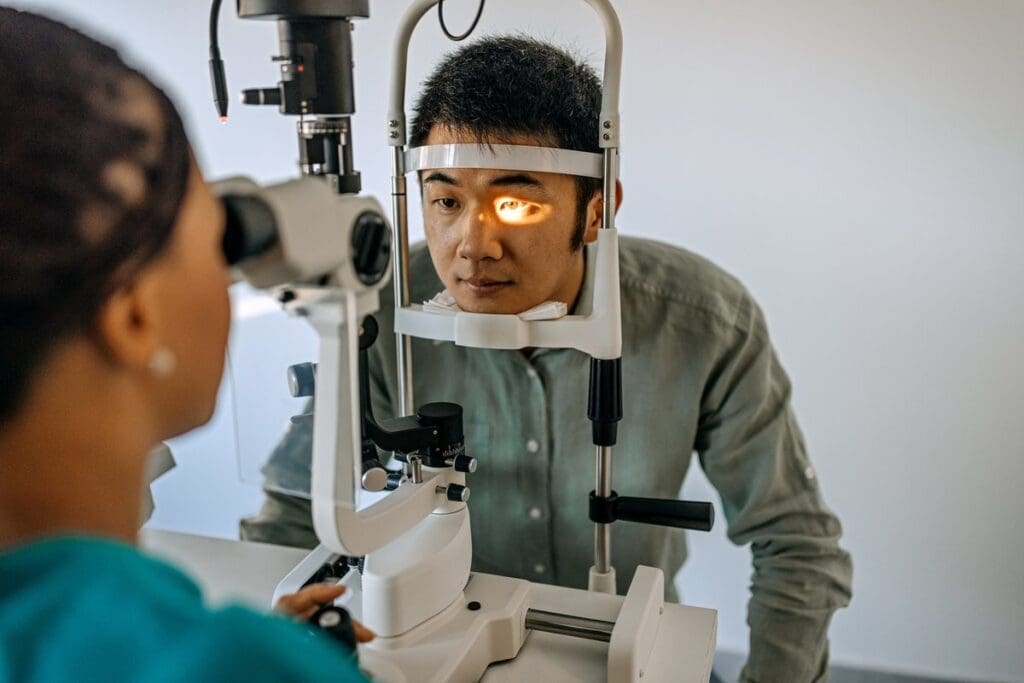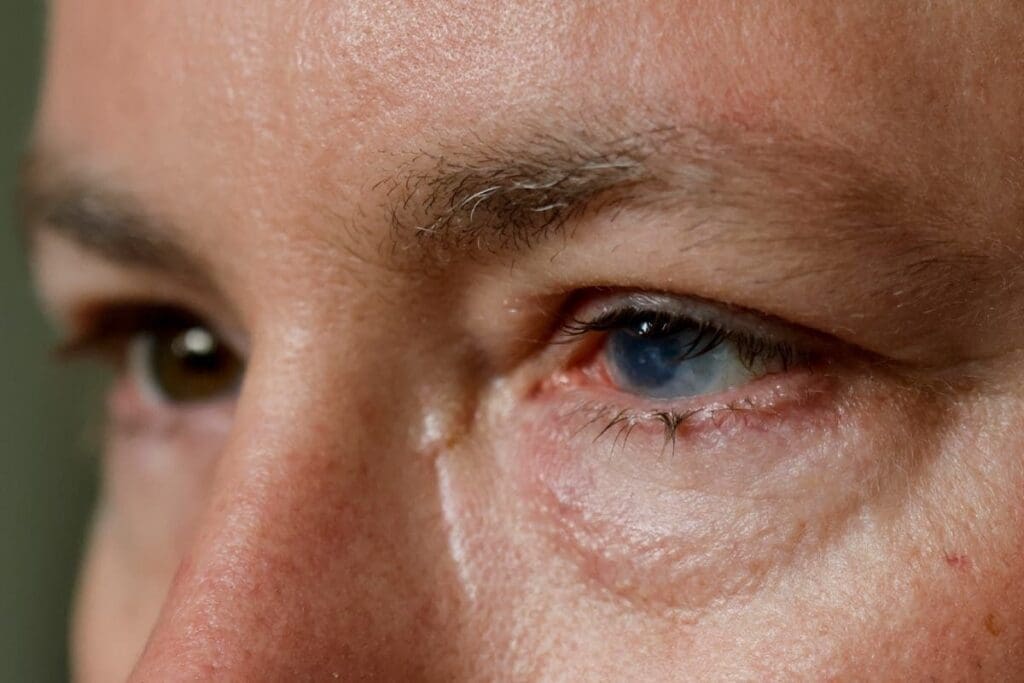Last Updated on November 24, 2025 by
Congenital anomalies, also known as birth defects, are conditions present at birth. They can affect many parts of a child’s health. The World Health Organization (WHO) says these anomalies happen during fetal development.

In the United States, about 1 in 33 babies is born with a congenital anomaly each year. Knowing the most common types of these conditions is key. It helps us give the right care and support. At Liv Hospital, we aim to provide top-notch healthcare. We also offer full support and guidance to international patients.
Congenital anomalies, also known as birth defects, deeply affect families and healthcare systems globally. These issues arise during fetal development, causing various health problems.
Congenital anomalies are present at birth and can affect the body’s structure or function. They fall into categories like chromosomal disorders, single-gene disorders, and multifactorial disorders. Knowing these types is key to diagnosis and treatment.

These anomalies affect about 1 in 33 babies worldwide. This means a lot of newborns face these issues every year. It shows the importance of good prenatal care and early help.
The effects of congenital anomalies go beyond physical health. They also have psychological and economic impacts. Families dealing with these issues often face high medical costs. They also need support and counseling to cope with the emotional strain.
We understand the complexity of congenital anomalies and their wide-ranging effects. At Liv Hospital, we aim to offer caring support and detailed care to families. We ensure they get the help and treatment they need.
Heart defects are the most common congenital anomalies, affecting many newborns worldwide. They are a big cause of sickness and death in infants. This makes them a key area for healthcare providers to focus on.

Congenital heart defects include many structural heart problems. They can be divided into several types, such as:
Congenital heart defects occur in about 1 in 100 to 1 in 200 newborns each year. This shows how important it is to be aware of and catch these issues early to help affected infants.
At Liv Hospital, we stress the importance of prenatal screening and early treatment for congenital heart disease. Our team is committed to giving top-notch care and support to families dealing with these conditions.
Knowing the risk factors for congenital heart defects is key to preventing them. Some known risk factors include:
Prevention strategies aim to lower these risks. This includes good prenatal care, a healthy lifestyle, and avoiding harmful exposures. By doing these things, we can lower the number of congenital heart defects and help newborns have better outcomes.
Clubfoot is the most common musculoskeletal congenital defect. It affects the foot’s formation. At Liv Hospital, we specialize in treating clubfoot and other congenital anomalies. We provide full care to children with these conditions.
Clubfoot makes the foot position abnormal, affecting one or both feet. It’s usually spotted at birth or early infancy. Early diagnosis is key to good treatment.
Doctors use a physical exam and sometimes X-rays to check the severity of the deformity.
Clubfoot happens in about 1 in 536 births. It’s a common congenital issue. The exact cause is often unknown, but genetics and environment might play a part.
Treatment for clubfoot has improved a lot. The Ponseti method is a top choice. It involves gentle foot manipulation and a cast used to fix the deformity.
Early treatment greatly improves results. It helps most kids get normal foot function and look.
A cleft lip with or without a cleft palate is a common birth defect. It affects many babies around the world. This condition changes how a baby looks and can make eating and speaking hard.
Cleft lip and palate come in different forms. They vary in how severe they are and what parts of the face are affected. The main types are:
Knowing the exact type is key to choosing the right treatment.
A cleft lip with or without a cleft palate happens in about 1 in 1,032 births. It’s a common birth defect. The rate can change based on where you are, your ethnicity, and your family’s income.
“The global incidence of cleft lip and palate varies significantly, highlighting the need for region-specific data to inform healthcare policies.”
Fixing a cleft lip and palate needs a team effort. Doctors, surgeons, speech therapists, and orthodontists all play a part. Surgery is often the main treatment to fix the cleft and help with eating and speaking.
At Liv Hospital, we offer full care for kids with cleft lip and palate. This includes:
Our team is committed to giving each child the care they need for the best results.
It’s important to understand Down syndrome and other chromosomal issues. This helps us give the right medical and emotional support to families. At Liv Hospital, we aim to provide full care to those with these conditions.
Down syndrome affects about 1 in 643 babies. It’s a common birth defect that doctors often see. This condition happens when there’s an extra copy of chromosome 21, causing physical and developmental problems.
Key Facts About Down Syndrome:
People with Down syndrome face many health issues. These include heart problems, hearing loss, and vision issues. It’s key to catch these early and start treatment right away.
“Early intervention can significantly improve the quality of life for individuals with Down syndrome.”
We offer a range of care. This includes heart checks, hearing and vision tests, and therapy to help with development. We tailor our care to meet each patient’s needs.
Other genetic issues like Turner syndrome and Klinefelter syndrome are also common. They need special care and support to handle their unique challenges.
“Advances in genetic screening have improved our ability to detect chromosomal abnormalities prenatally, allowing for better preparation and decision-making for families.”
Expert in Genetics
We’re here to offer support and guidance to families with Down syndrome and other genetic disorders. We want to make sure they get the care and resources they need.
It’s important to know what affects congenital anomaly rates. These are birth defects that happen in the womb. They can be caused by genes, the environment, or a mix of both.
Congenital anomalies happen more in some places and groups than others. For example, heart defects are more common in certain groups because of their genes. The World Health Organization says these differences come from genetics, environment, and social status.
Socioeconomic factors greatly impact congenital anomalies. Things like healthcare access, nutrition, and exposure to harmful substances depend on a family’s wealth. Poorer families often struggle to get prenatal care and genetic counseling, which are key for early detection and treatment.
Environmental factors are a big risk for congenital anomalies. Exposure to chemicals, radiation, and infections during pregnancy can raise the risk. Preventing these exposures and getting good prenatal care can lower the risk. It’s vital to teach pregnant women about these risks and how to avoid them.
Knowing what affects congenital anomaly rates helps us find ways to prevent them. At Liv Hospital, we focus on caring for those with congenital anomalies. We aim to meet their needs with care and knowledge.
Advances in prenatal screening have changed how we find and manage congenital anomalies. At Liv Hospital, we use the latest technology and a team of experts. This ensures we give the best care for these conditions.
Prenatal ultrasonography is key in finding congenital anomalies. We use advanced ultrasonography to spot issues early. We also offer non-invasive prenatal testing (NIPT) and diagnostic tests like amniocentesis and chorionic villus sampling (CVS) for high-risk pregnancies.
These methods help us find heart defects, clubfoot, and cleft lip and palate. Finding these issues early means we can act quickly. This can greatly improve the outcome.
New technology has made it easier to find congenital anomalies early. 3D and 4D ultrasound imaging gives us clear views of the fetus. Genetic testing has also improved, helping us find chromosomal disorders like Down syndrome more accurately.
Managing congenital anomalies needs a multidisciplinary approach. This involves experts from obstetrics, neonatology, surgery, and rehabilitation. At Liv Hospital, we create a team for each patient. This team works together to plan the best care.
Our care includes surgery and supportive therapies like physical therapy and speech therapy. We aim to meet the physical, emotional, and psychological needs of our patients and their families.
To better the lives of those with congenital anomalies, we need a team effort. Finding and treating problems early is key to a better life.
Liv Hospital is dedicated to top-notch care for those with congenital anomalies. Our teams work together. They help from the start, through surgery, and beyond.
Working together, we can make a big difference. We tackle the medical, emotional, and social challenges. This way, we offer care that truly makes a difference in people’s lives.
Congenital anomalies, also known as birth defects, are conditions present at birth. They can affect a child’s health in many ways.
About 1 in 33 babies is affected by congenital anomalies.
Congenital heart defects include issues with the heart’s structure and function. There are several types.
Congenital heart defects happen in about 1 in 100-200 newborns.
Clubfoot is a musculoskeletal defect. It can be treated with non-surgical and surgical methods.
Clubfoot occurs in about 1 in 536 births.
Cleft lip and palate are facial anomalies. They require surgery and a team of specialists.
Cleft lip and palate happen in about 1 in 1,032 births.
Down syndrome is a chromosomal disorder. It affects about 1 in 643 births and has health implications.
Factors like regional and ethnic variations, socioeconomic status, and environmental exposures affect congenital anomaly rates.
Prenatal screening and diagnostic methods detect congenital anomalies. They are managed with a team approach.
Early detection and treatment can greatly improve outcomes for those with congenital anomalies.
A congenital malformation is a structural or functional anomaly that occurs during fetal development.
Socioeconomic factors, like healthcare access and nutrition, can affect congenital anomaly rates.
Environmental exposures and certain lifestyle choices can increase the risk of congenital anomalies.
Subscribe to our e-newsletter to stay informed about the latest innovations in the world of health and exclusive offers!